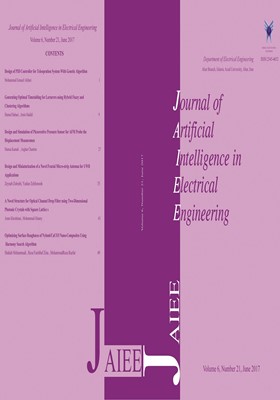-
-
List of Articles
-
Open Access Article
1 - Design of PID Controller for Teleopration System with Genetic Algorithm
Mohammad Esmaeil akbari -
Open Access Article
2 - Generating Optimal Timetabling for Lecturers using Hybrid Fuzzy and Clustering Algorithms
hamed babaei amin hadidi -
Open Access Article
3 - Design and Simulation of piezorestive pressure sensor for AFM Probe the displacement measurement
Hamsa Kamali Asghar charmin -
Open Access Article
4 - Design and Miniaturization of a Novel Fractal Microstrip Antenna for UWB Applications
Zeynab Zohrabi yashar zehforoosh -
Open Access Article
5 - A Novel Structure for Optical Channel Drop Filter using Two-Dimensional Photonic Crystals with Square Lattice
aram khoshtinat Mohammad Ghiamy -
Open Access Article
6 - Optimizing Surface Roughness of Nylon6/CaCO3 Nano-Composites Using Harmony Search Algorithm
Shahab Mohammadi Reza Farshbaf Zinati MohammadReza Razfar
-
The rights to this website are owned by the Raimag Press Management System.
Copyright © 2021-2025







